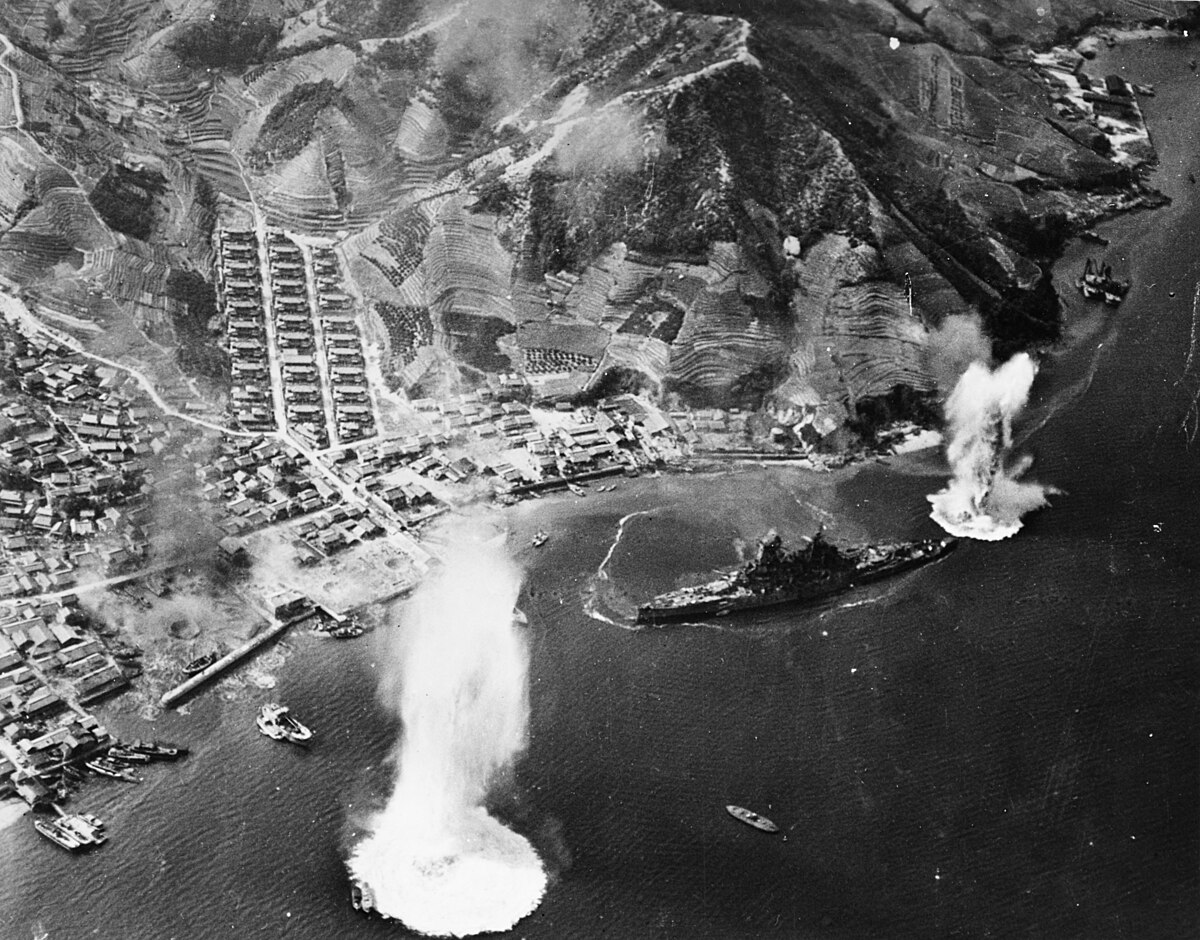By summer 1945 US carrier operations were entirely sustainable. With multiple carrier groups, off Okinawa between March and June they were able to rotate those groups to ensure there were at least 2 off the island at any one time. Every 3-4 days a group would pull out to refuel and resupply over a day or two. Fuel, ammunition, replacement aircraft and stores were all able to resupplied at sea in the replenishment areas. Every so often a group would take a week out for a rest at Ulithi.They tried, it didn't end so well.

Attacks on Kure and the Seto Inland Sea - Wikipedia
en.wikipedia.org
They did do an awful lot of damage, however the operation may not have been sustainable.
In mid-June TF38 left Okinawa for Leyte. It sailed for operations off Japan on 1 July. The 3 TGs contained a total of 9 Essex class (with air groups containing c75 Hellcat or Corsair fighters, 15 Avengers and 15 Helldivers), 6 Independence class (c25 Hellcats and 9 Avengers) plus the Bon Homme Richard with a night air group. It operated continuously through to the end of the fighting on 15 Aug, and beyond the eventual surrender ceremony on 2 Sept, increasing in strength around mid-Aug. A map of the operations is below. Note the distances covered by the Fleet during this period.
Intrepid, Antietam, Boxer & the light carrier Cabot all joined the fleet off Japan before the end of Aug. Enterprise, Langley, Bunker Hill and Hornet were also all completing repairs / refits on the West Coast in late Aug / early Sept.
Operation Olympic was scheduled for 1 Nov 1945. Carrier operations in support thereof would have begun a few weeks earlier. Plans called for 5 carrier task groups split between the Fifth and Third Fleets. These would have included 13 Essex, 7 Independence plus Enterprise and Bon Homme Richard as night carriers.
By summer 1945 there were sufficient spare carrier air groups to allow air groups to be replaced as an entity every 6 months.
The TF37 (the BPF) sailed from Sydney on 28 June for Manus and onwards to Japan. They joined TF 38 on 16th July with 4 carriers and c260 aircraft and operated as a fourth TG to that force until 12 Aug. At that point the bulk of TF37 withdrew as previously planned, its logistics support being inadequate to maintain the whole force in Japanese waters any longer. KGV, Indefatigable and some supporting cruisers and destroyers remained as TG38.5 to participate in the final surrender arrangements.
Had the war continued a second BPF carrier task group, forming in Sydney around Indomitable and 3 light fleet carriers, would have participated in operations in the East China Sea in late Aug / early Sept. These ships sailed from Sydney on 15 Aug for Manus and on to reoccupy Hong Kong at the end of the month. For Operation Olympic the BPF would have fielded 2 carrier groups with 4 fleet and 4 light fleet carriers.
When the TF37/38 struck the Yokosuka and Kure areas in late July, the USN retained the major targets for themselves. By that stage the large Japanese ships were sitting ducks. Virtually out of fuel, often only partially manned or partially disarmed. Having said that Japanese flak and fighters continued to claim victims right up until the eventual ceasefire on 15 Aug.
Last edited:
